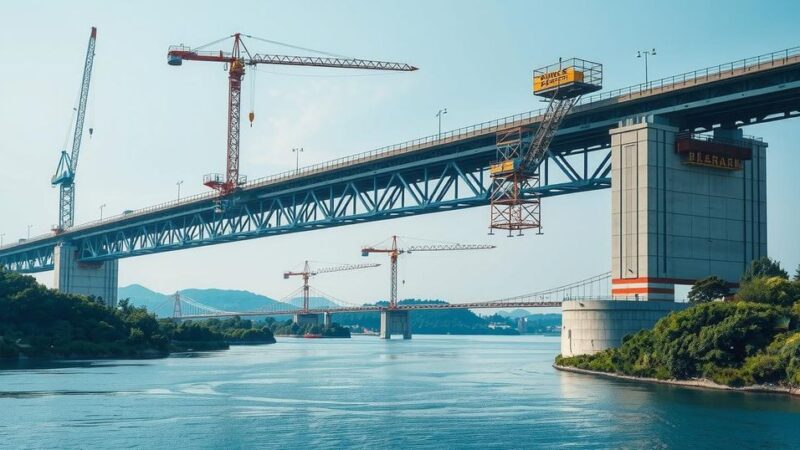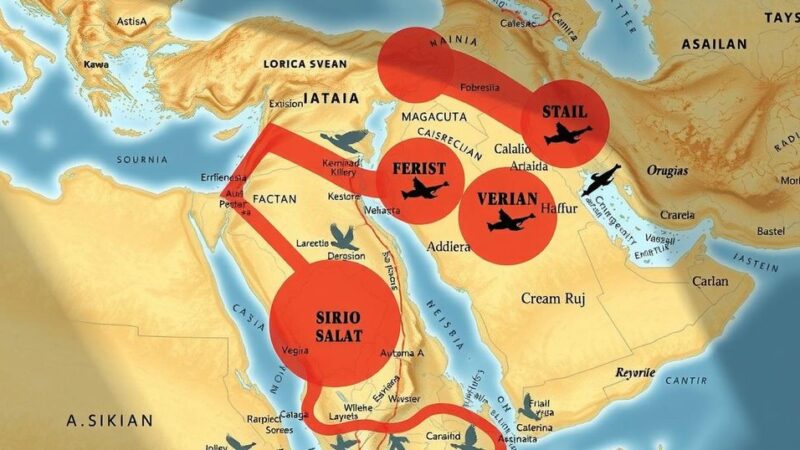The article details the harrowing narratives of Sudanese refugees, particularly Farid and Ahmed, who escape war in Sudan and endure perilous conditions in Libya. It highlights the humanitarian crisis of displacement, violence, and exploitation, alongside the EU’s controversial approach to immigration control in Libya that raises concerns about human rights violations.
In a distressing account from the Mediterranean, a surveillance aircraft alerted that a rubber boat carrying 70 individuals was in peril off the coast of Libya. The German NGO SOS Humanity’s rescue vessel, Humanity 1, responded promptly to the scene, finding many passengers, mostly unaccompanied minors fleeing the conflict in Sudan, in dire straits after two harrowing days at sea.
Among those rescued was Farid, a 17-year-old from Al-Fashir, who recounted his traumatic experiences. “The helicopters still haunt me. Airstrike after airstrike. Dead bodies everywhere,” he disclosed. The ongoing conflict in Sudan between the government forces and paramilitary groups has left tens of thousands dead, with over 12 million displaced and millions more in need of food aid. Farid lamented that food supplies were often stolen and sold by the warring factions, leading to widespread starvation in his home city.
Farid’s journey to safety included a stop in Kufra, a region plagued by violence and mass graves of migrants. Upon his arrival, he joined a crowd of Sudanese refugees seeking help. Libyan authorities offered him shelter in exchange for forced labor collecting plastic waste, underscoring the precarious conditions faced by migrants. “Kufra is a tribal area. And we are slaves in their land,” he stated, expressing the fear of dire consequences should they resist.
The UN refugee agency reports that over 210,000 Sudanese refugees are currently in Libya, comprising a significant majority of the refugee population. Many, like Farid, face extreme mistreatment, with some, particularly women, subjected to horrific violence. “I saw a girl being beaten and raped. They killed her and left her on the street,” Farid recounted, portraying the grave dangers migrants confront during their trek through Libya.
Another migrant, Ahmed, further illustrated the perilous plight of Sudanese escaping conflict. Held captive in a smuggler’s facility for four months, he described the arduous cycle of being re-captured and having to pay for his release as a game of “snakes and ladders” in which many face continuous exploitation. Notably, he pointed out that the Libyan coast guard has established unofficial tolls for the safe passage of migrants, based on the amount they pay.
The European Union has dedicated over 465 million euros to support Libyan authorities in curbing migration flows. However, human rights organizations criticize these efforts, highlighting systemic abuses resulting from these policies. The European Court of Auditors cautioned that there has been a concerning lack of response to allegations of human rights violations, with some detention facilities implicated in crimes against humanity linked to EU funding.
While the EU insists that its funds do not go directly to Libyan authorities, it aims to enhance local responses to migration while ensuring the safety and dignity of refugees. A spokesperson expressed commitment to monitoring abuse reports and bolstering Libyan capacities to combat human trafficking and support migrant welfare. Ahmed, reflecting on his harrowing experiences as Humanity 1 navigated the Mediterranean, affirmed that despite the dangers he faced, he would undertake the journey again for the chance to escape the violence in Sudan. “Dying at sea is better. The sea will not torture you,” he stated, starkly conveying the desperation that drives many to risk their lives for safety.
The harrowing testimonies of Farid and Ahmed illustrate the dire circumstances facing Sudanese refugees fleeing conflict. While the EU’s financial assistance aims to bolster Libyan immigration control, it has raised concerns about widespread human rights abuses. The plight of these migrants underscores the urgent need for more humane and effective strategies to address the root causes of their forced migration. Ultimately, their journeys highlight a tragic reality: many would rather face the dangerous sea than return to the violence they fled.
Original Source: www.arabnews.pk






